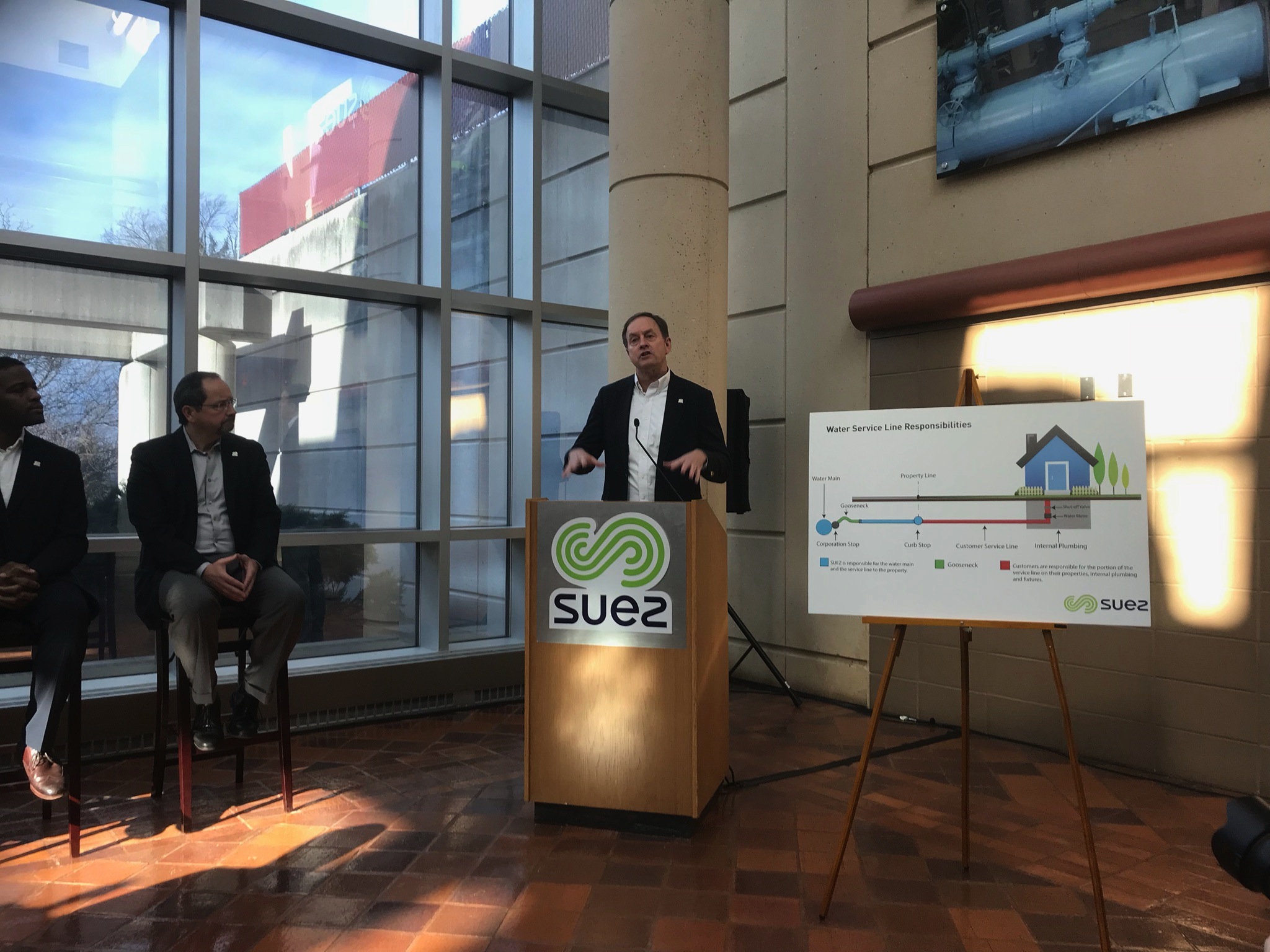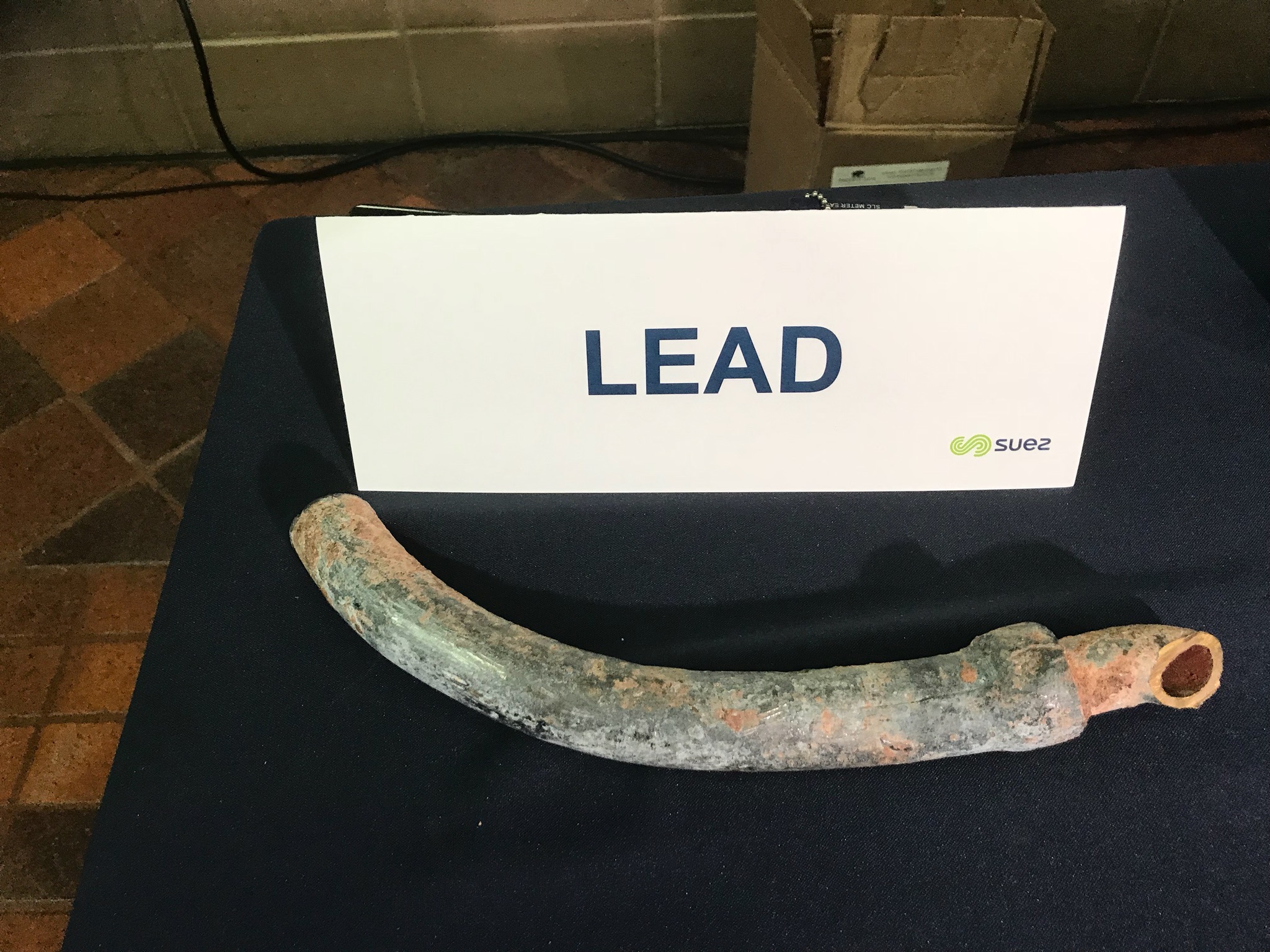
NEW JERSEY—An area congressman’s report on lead in school drinking water identifies several Pascack Valley school districts that have not posted lead test results on school websites—as required by state law.
Meanwhile, a statewide task force last week called for a comprehensive statewide approach to remove lead from all drinking water in New Jersey.
Also last week, Fifth District U.S. Rep. Josh Gottheimer released a report that provides data on 49 Bergen County districts, along with 36 additional districts in Sussex, Warren and Passaic counties that together comprise the Fifth district.
Gottheimer’s report notes New Jersey school districts are required to test for lead every six years and to clearly post lead testing results at each school facility and on the district website.
However, the survey found almost 20% of 85 districts are not posting results on district websites. Gottheimer has previously called for more frequent testing for lead in school drinking water sources.
“I believe it is essential that parents, teachers, and administrators have all of the information at their fingertips about lead levels in their schools, so they are well-informed about potential health issues their children may face, and schools can take necessary measures,” Gottheimer announced.
Against that backdrop, Jersey Water Works Lead in Drinking Water Task Force, a collaborative of individuals and organizations “working to improve the state’s water infrastructure in sustainable cost-effective ways,” says lead is “but one of many water infrastructure challenges facing New Jersey communities.”
Financial solutions to address lead in water must be made in the context of a broader set of needs, the group says.
Those needs include aging water and sewer systems, combined sewer overflows in 21 communities, new water quality standards to remove emerging contaminants, water and sewer improvements to address sea level rise, and better stormwater pollution management.
Task force chair Chris Daggett said the recommendations start with a holistic state-level campaign to address lead from all sources: water, paint, and soil.
“The report lays out a package of legislation that would simultaneously require and empower water utilities to replace dangerous lead pipes regardless of ownership,” he said.
He also said it identifies the important state agency regulations, outreach programs, and transparency measures to ensure safe drinking water in homes, schools, and child care facilities.
“These actions should be complemented by other efforts to address lead exposure and improve water infrastructure,” Daggett said.
Some schools not complying
Here at home, Gottheimer’s report notes only 28 schools linked to lead testing results from their home pages and even if posted, sometimes results were difficult to locate online.
He said the survey of districts was “based on our ability to easily search and find—or not find—the information.”
Oftentimes, he said, it was difficult to determine what, if any, actions had been taken to remediate high lead level readings.
Gottheimer said districts should put lead test results in a conspicuous place on websites and “in plain speak” for parents to understand.
Based on his findings, he urged state education officials to enforce the state law calling for districts to post lead testing results at each facility and on district websites.
Of 17 Pascack and Northern Valley school districts Gottheimer’s office surveyed, six (approximately 35%) did not provide lead test results online.
Those included K–8 schools in Alpine, Emerson, Montvale, Northvale, Old Tappan, and Woodcliff Lake.
Schools posting lead results included Closter, Demarest, Harrington Park, Hillsdale, Norwood, Park Ridge, River Vale, Westwood Regional, Northern Valley at Demarest, Northern Valley at Old Tappan, and Tenafly High School.
Although the report did not survey Pascack Valley Regional High School District, it should be noted that district prominently posts its results under a “Community” drop-down menu where “Health & Safety Notifications” opens up to 2017 lead testing results for Pascack Hills and Pascack Valley high schools.
“Our results have been reposted online. They had been posted for a very long time on our main page but after updating our websites recently, they had been taken down,” Montvale Schools Superintendent Darren Petersen told Pascack Press on Oct. 10.
Petersen thanked Pascack Press for alerting him to the missing results.
New Jersey lead challenges
While a recent inventory of lead pipes across New Jersey found 161,000 lead service lines in 104 water systems, according to preliminary numbers compiled by New Jersey Future, lead in drinking water affects communities in every county.
Although Newark has grabbed attention for its recent lead problems, leading to a federal order to provide bottled water and a $120 million effort to replace 18,000 customer lead pipes, a recent New Jersey Future map reveals lead pipe concentrations statewide, most focused on large urban and suburban areas.
Approximately 5 million residents are served by the 104 water systems with lead service lines. In addition to lead service lines, homes may contain lead pipes used for internal plumbing as well as lead fixtures or connections that may contribute lead.
Task force recommends 10-year plan to solve problem
Moving forward, the Jersey Water Works Lead in Drinking Water Task Force lays out 19 “interdependent actions, which as a package can virtually eliminate lead in water within 10 years.”
“Lead in Drinking Water: A Permanent Solution for New Jersey,” released Oct. 10, recommends eliminating all lead service lines that supply water to homes and businesses—estimated at 350,000 lines statewide—over 10 years at a cost of $2 billion.
The group calls for a state subsidy worth $500 million that would cover a quarter of replacement costs, saying the funds could be raised through borrowing, “possibly backed by a small fee imposed on water utilities or water users.”
Following removal of lead service lines, the reports calls for more effective corrosion control by water treatment utilities to prevent any remaining lead in plumbing or fixtures from leaching into water.
While the task force notes the $2 billion price tag for lead removal is costly, it says the expense is “a one-time investment that New Jersey must afford.”
“Long-term cost reductions in health care, special education, and lifetime earning potential will far exceed the investment. Though we lack precise records, we know enough to get started, and we know how to obtain the missing information to complete the work. This is a problem we can, and must, solve,” the group says.
The report recommends:
• The coordination of a state-level campaign for a lead-free state;
• Permanently replacing lead service lines in 10 years with a comprehensive legislative package of bills;
• A 10-year funding program for lead line replacements;
• Enacting protective rules and programs to ensure safe drinking water; and
• Ensuring water quality in childcare facilities and schools.
The group calls for Gov. Phil Murphy to declare lead a public health threat by executive order and requests legislation to require lead line disclosure at home sales and rentals, require annual lead line inventories, mandate lead line replacements, and ensure property owner participation in no-cost lead line replacements.
Moreover, the group recommends legislation enabling utility rate recovery to fund lead line removals; calls on the NJDEP to amend the state Lead and Copper Rule to improve water sampling; proposes certifying home inspectors to test for lead in dust, water, and soil; wants education for at-risk populations through local health organizations; and seeks research into health-based lead standards for homes and childcare facilities below the federal 15 parts per billion.
The task force further calls for school lead testing every three years to match what’s required in childcare facilities, plus a statewide online data portal of lead sampling results.
In addition, the group recommends lead line replacements for child facilities be prioritized based on where elevated blood lead levels in children are found.
Another recommendation: prioritize distribution of $100 million in Securing Our Children’s Future Bond Act funds based on children’s blood lead levels, and high-impact, low-cost projects needed, including lead line and lead fixture removals.
As part of Bond Act funding, the group recommends funding “sequential testing” to pinpoint lead sources within indoor plumbing and a requirement for schools to submit a drinking water plan that describes its remediation process and projects.
The group notes in its report that many lead service lines were installed prior to 1940, when the toxic material was prized for its malleability as field crews navigated tight spaces in the water distribution system.
According to the Jersey Water Works Lead in Drinking Water Task Force, nearly 20% of current housing units in New Jersey were built before then: approximately 678,716 units out of 3.6 million.
The group says that assuming 350,000 lead service lines in New Jersey, and assuming an average installation cost of $5,000–$6,700, the cost of replacing all of the state’s lead service lines would range $1.75 billion to $2.3 billion.
It adds that other estimates peg the cost at $3 billion.
“The true cost will not be known until the work is done, but these estimates provide a solid starting point,” the task force says.
Their report suggests several funding options for lead line replacements, including water utility rate increases, which require legislation to authorize utilities to charge customers to replace lines they do not own due to a public health threat.
Another suggestion: state subsidies for water utilities that cannot afford to do such replacements should be investigated.
The report suggests state funding options for lead line replacements include a possible state appropriation, as well as a state bond without a revenue source to repay or a state bond with a water surcharge to repay the bond.
One of the ongoing obstacles to use a utility rate increase to replace privately-owned (customer) lines is illustrated on page 28, where the report notes how New Jersey American Water Company was forced to disband a customer lead replacement effort because the state Division of Rate Counsel opposed it.
Suez North America faces a similar challenge. Suez submitted a proposal in March to replace customer lines that would charge all ratepayers an unspecified amount to initiate a two-year pilot program.
The state Division of Rate Counsel, representing utility ratepayers, opposes the plan, and the matter is under review by the state Office of Administrative Law. The report recommends legislation be approved to allow utilities a 10-year window to charge for customer lead line replacements.



